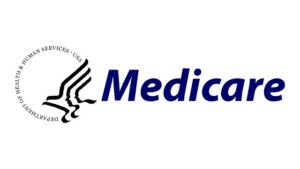Fiduciary vs. Financial Planner: Understanding the DifferenceFiduciary vs. Financial Planner: Understanding the Difference
When it comes to managing your finances, seeking professional guidance is often a wise decision. However, choosing between a fiduciary and a financial planner can be confusing, especially since their roles sometimes overlap. Understanding their distinctions and how they serve your financial goals can help you make an informed choice.
Who Is a Financial Planner?
A financial planner is a professional who helps individuals and businesses create strategies to meet their financial goals. These goals may include saving for retirement, funding education, managing debt, or building wealth.
Key Responsibilities of a Financial Planner:
- Financial Assessment: Analyzing a client’s income, expenses, investments, and overall financial health.
- Goal Setting: Helping clients establish clear, actionable financial goals.
- Plan Creation: Developing a personalized roadmap for achieving short-term and long-term objectives.
- Investment Guidance: Providing advice on investment options that align with the client’s goals and risk tolerance.
- Comprehensive Advice: Offering insights into budgeting, tax planning, insurance, and estate planning.
Financial planners may hold certifications like Certified Financial Planner (CFP), which indicates rigorous training and adherence to ethical standards. However, not all financial planners are fiduciaries.
What Is a Fiduciary?
A fiduciary is a financial professional who is legally and ethically obligated to act in the best interest of their clients. Unlike other financial advisors who may follow a “suitability standard” (recommending suitable products but not necessarily the best ones), fiduciaries must prioritize their clients’ needs over their own financial gain.
Key Responsibilities of a Fiduciary:
- Client-First Commitment: Providing unbiased advice that benefits the client, free from conflicts of interest.
- Transparency: Fully disclosing fees, commissions, and any potential conflicts.
- Ongoing Duty: Continuously monitoring and updating financial plans to align with the client’s best interests.
Fiduciaries often include investment advisors registered with the Securities and Exchange Commission (SEC) or state regulatory agencies.
Differences Between a Fiduciary and a Financial Planner
| Aspect | Fiduciary | Financial Planner |
|---|---|---|
| Obligation | Legally bound to act in the client’s best interest. | No legal obligation; may follow a suitability standard. |
| Focus | Investment advice and financial management with transparency. | Broader financial guidance, including budgeting, insurance, and taxes. |
| Compensation | Fee-based or fee-only (no commissions). | Fee-based, commission-based, or a combination. |
| Regulation | Governed by fiduciary standards. | Varies; not all are bound by fiduciary rules. |
Why Choose a Fiduciary?
Opting for a Fiduciary Minneapolis is ideal if you want someone who prioritizes your best financial outcomes. Fiduciaries offer:
- Conflict-Free Advice: They don’t earn commissions by selling specific products, ensuring their advice is unbiased.
- Long-Term Commitment: Fiduciaries focus on building lasting relationships with their clients by maintaining trust and transparency.
Why Choose a Financial Planner?
A Financial Planner Minneapolis may be a better fit if you need:
- Holistic Planning: Financial planners provide comprehensive guidance that goes beyond investments, including budgeting, debt management, and insurance planning.
- Goal-Oriented Strategies: For individuals just starting their financial journey, financial planners can offer actionable steps to establish a strong foundation.
How to Choose the Right Professional
- Determine Your Needs: Are you looking for comprehensive financial planning or specific investment advice?
- Check Credentials: Look for certifications like CFP, CFA, or a fiduciary registration to verify qualifications.
- Understand Their Compensation: Ask about their fee structure and ensure it aligns with your comfort level.
- Ask About Standards: Inquire if the professional follows a fiduciary standard or a suitability standard.
Conclusion
Both fiduciaries and financial planners play valuable roles in helping individuals achieve financial success. A fiduciary offers focused, conflict-free investment advice, while a financial planner provides broader guidance for various financial goals. By understanding their differences and aligning them with your needs, you can confidently choose the right professional to secure your financial future.
Guardian Wealth Strategies is one of the leading independent, fiduciary investment firms in the Minneapolis-St. Paul metro area. With a team of licensed professionals, they provide fiduciary advice—advice that is always in your best interest—along with plan design and execution to help individuals and nonprofits reach their investment goals. Visit them at https://gwealth.com/


